Animal tongues come in all shapes, sizes, and functions, ranging from the practical to the downright weird. Each species has adapted its tongue to meet its environmental and survival needs, whether for feeding, grooming, or self-defense. Let’s dive into the world of unique animal tongues, their fascinating uses, and what makes them so special.
Giraffes are well-known for their long necks, but did you know their tongues are equally impressive? A giraffe’s tongue can reach lengths of 45–50 cm (17.7–19.7 inches) and is highly flexible. This long, muscular tongue helps them grab leaves from the tallest trees, like acacias, and even strip thorny plants without injury. The giraffe’s tongue is dark—often described as purple or bluish—likely to protect it from sunburn while reaching for food under the harsh sun
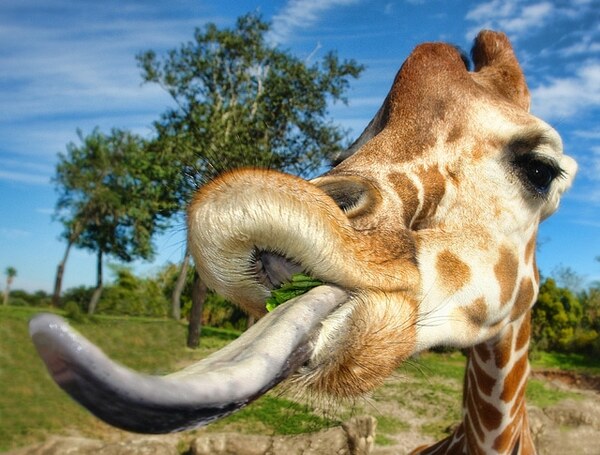
Felines, from your house cat to wild big cats like lions, have specialized tongues covered with sharp, backward-facing papillae. These tiny, spiny structures are perfect for grooming, as they catch dirt and loose fur. Interestingly, cats’ tongues can’t taste sweetness, which makes sense since they’re obligate carnivores and don’t need to consume sugar in their diet.

Frogs are famous for their lightning-fast tongues, capable of snapping up prey in the blink of an eye. A frog’s tongue is attached at the front of its mouth, enabling it to shoot out rapidly and catch insects, small animals, or even other frogs. Some frogs, like the horned frog, can catch prey that’s heavier than themselves
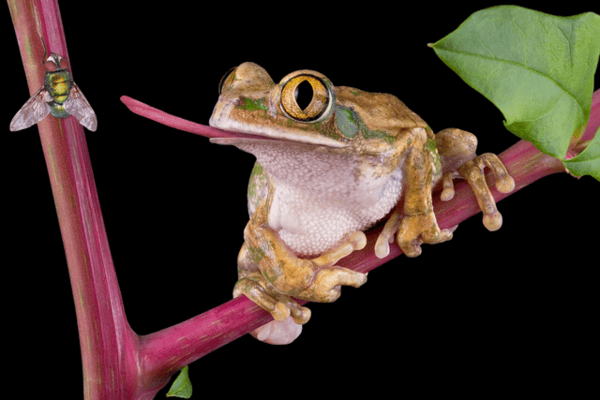
Blue-tongued skinks use their vibrant blue tongues as a defense mechanism. When threatened, these reptiles puff up their bodies and open their mouths wide, showing off their bright blue tongues to scare off predators. This startling display is a clever survival tactic, giving the skink a moment to escape
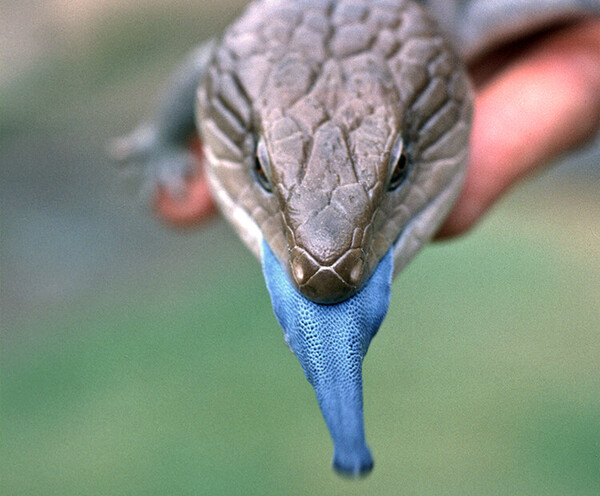
The alligator snapping turtle is known for using its pink, worm-like tongue as bait. The turtle opens its mouth and wiggles its tongue to mimic the movement of a worm, attracting hungry fish right into its jaws. This clever tongue-based hunting strategy ensures the turtle has a consistent food supply

Eagles have sharp, barbed tongues that help them feed. These backward-facing spines, called rear-directed papillae, assist eagles in swallowing prey by helping them push food down their throats. When feeding chicks, the barbed tongue also prevents large chunks from blocking their airways, ensuring a smooth feeding process
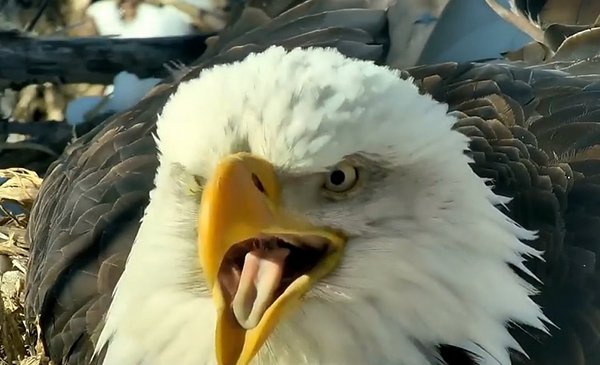
One of the most bizarre adaptations comes from the Cymothoa exigua, a parasitic isopod that invades the mouths of fish. This parasite destroys the fish’s original tongue and replaces it, essentially becoming the fish’s new "tongue." It then feeds on the fish’s blood, leaving it in control of the fish’s eating and swallowing movements
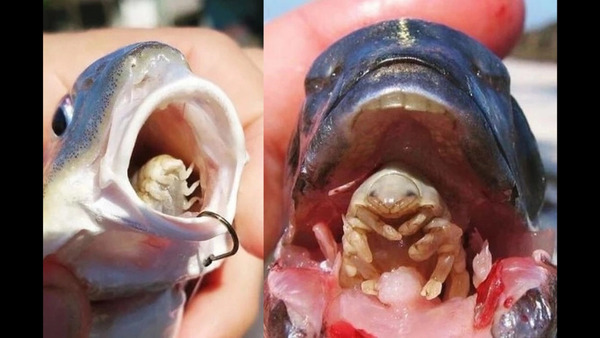
Anteaters are another example of animals with a specialized tongue. Their tongues are long, sticky, and can extend up to 2 feet (60 cm). They use their tongues to slurp up ants and termites from their nests, using a method that’s both quick and efficient. Anteaters don’t have teeth, so their tongues are their main tool for feeding
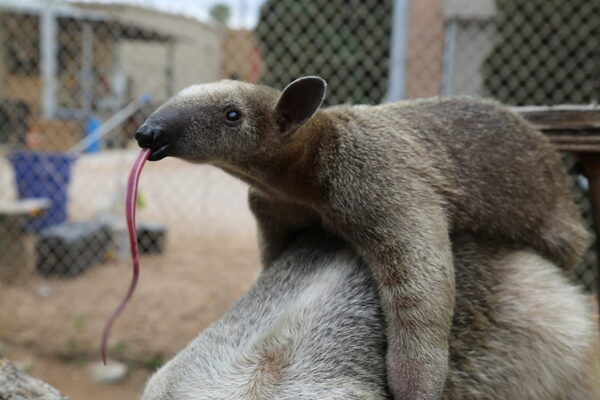
Woodpeckers have one of the most fascinating tongues in the animal kingdom. Their tongues can stretch out more than their entire body length, enabling them to reach deep into tree bark to retrieve insects. The tongue even wraps around the bird’s skull to store itself when not in use. This unique adaptation helps woodpeckers extract hard-to-reach food
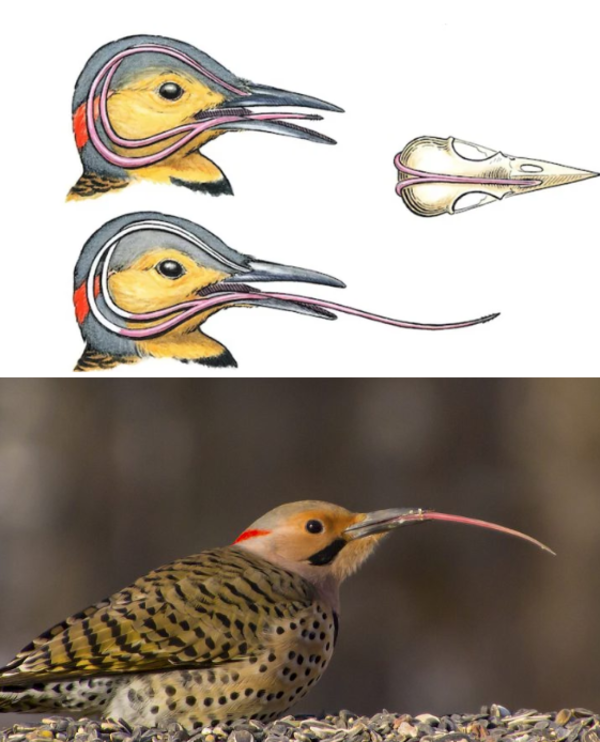
Chameleons are famous for their color-changing abilities, but their tongues are equally remarkable. Their tongues are long and very fast, capable of shooting out at high speeds to capture prey. The tip of the tongue is sticky, allowing it to cling to insects and pull them back into the chameleon’s mouth with precision
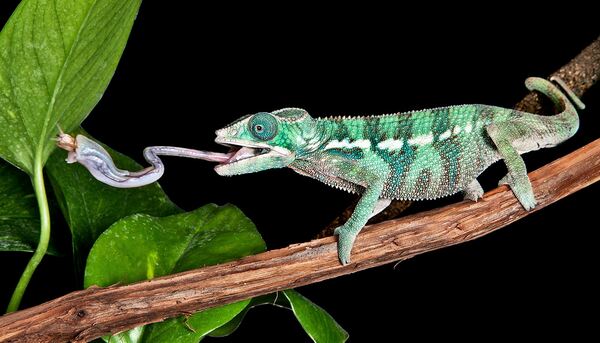
As we’ve seen, animal tongues are incredibly diverse and serve specific purposes. Whether it’s for feeding, defense, or communication, each species has adapted its tongue to thrive in its environment. From the giraffe’s long, protective tongue to the parasitic Cymothoa that steals its host’s tongue, the animal kingdom is full of surprising and fascinating tongue-related adaptations.
Next time you think about animal behavior, don’t forget to consider how their tongues play a crucial role in their survival!
In addition to the fascinating tongue adaptations we've already discussed, there are also a number of animals with tongues that stand out due to their unusual and distinct colors. These colorful tongues serve various purposes, from attracting mates to helping with food consumption or defense. Let's explore some animals with tongues in a range of vibrant colors:
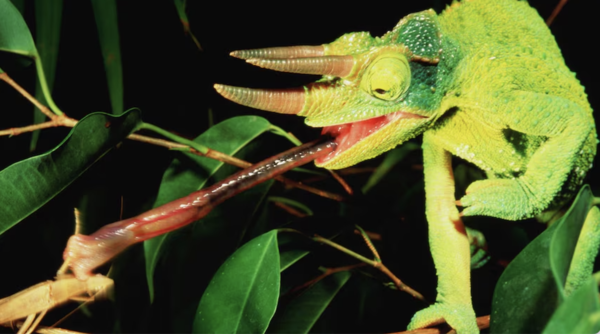
Chameleons are well-known for their color-changing abilities, but did you know their tongues also feature color variations? A chameleon’s tongue can be a mix of bright colors such as pink, red, and orange. This tongue is not just colorful; it’s a highly specialized tool that shoots out rapidly to capture prey, and the tip is sticky to ensure a strong hold on insects. These tongues are typically bright due to the high blood flow, which enhances the speed and efficiency of the tongue's movement
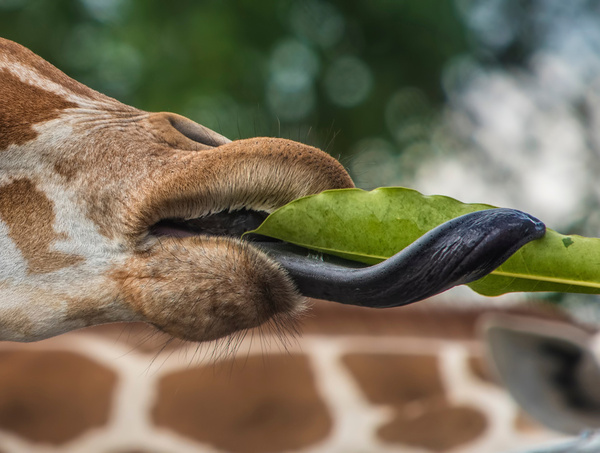
As mentioned earlier, giraffes have long, dark-colored tongues, often described as bluish or purple. The deep color likely serves to protect the giraffe from sunburn, as they spend a lot of time in the sun while feeding on trees like acacias. The dark hue helps absorb sunlight and prevent the delicate skin on their tongues from getting damaged by the harsh rays
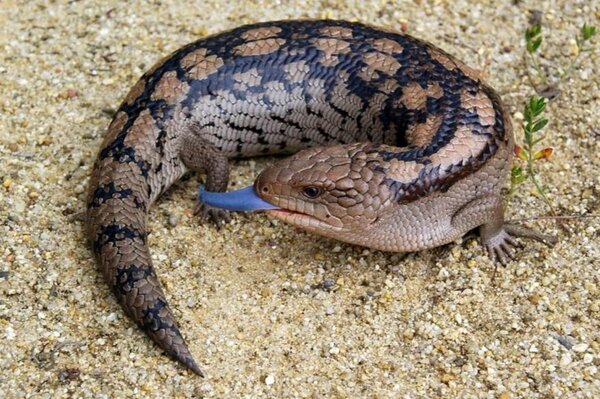
Blue-tongued skinks have one of the most distinctive tongues in the animal kingdom. When threatened, these reptiles display their bright blue tongues, which can be a startling sight to potential predators. The blue tongue’s vivid color is used as a defensive mechanism to intimidate or confuse attackers, buying the skink time to escape
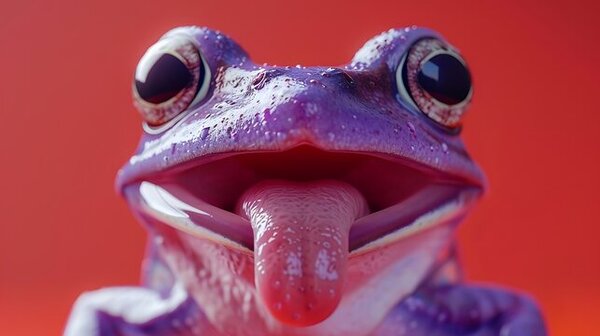
The Indian purple frog, a species native to India, has a strikingly purple tongue. This tongue is not only unusual in color but also adapted to its unique way of feeding. The purple frog’s tongue is used to swallow prey like termites and ants whole. The vibrant hue may serve as a way to blend with the subterranean environment in which it lives, although its exact evolutionary purpose remains unclear
While the mandarin fish is better known for its rainbow-like body colors, its tongue is also quite colorful. The tongue of this small, tropical fish has hints of blue and green. This colorful appearance likely helps the mandarin fish attract mates, as bright colors are often a signal of health and vitality in many species
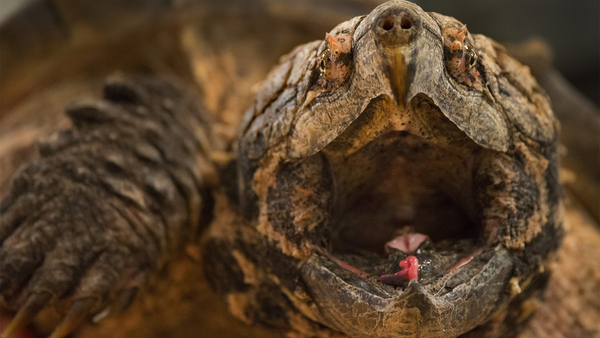
The alligator snapping turtle has a surprisingly pink tongue that it uses as a lure to attract fish. The bright pink color mimics the appearance of a worm, attracting hungry fish into the turtle’s waiting jaws. This is a classic example of how color can play a role in animal behavior and survival

Koalas have a dark-colored tongue that helps them graze on eucalyptus leaves. The color of their tongue matches the color of the leaves they consume, and it helps them maintain a subtle connection with their environment. Their tongue, while not as vivid as others, is still specialized for its environment, helping them navigate through the rough, leathery texture of eucalyptus leaves
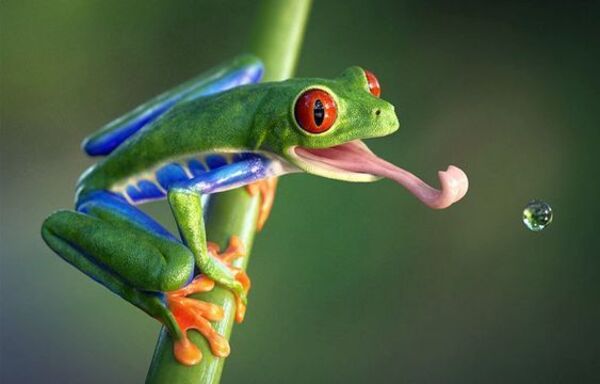
While not directly about their tongues, it’s worth mentioning that many brightly-colored amphibians, like the blue poison arrow frog, have distinctive colored features, including the inside of their mouths and tongues. The intense blue coloration serves a warning to predators about their toxicity, reinforcing the "don't eat me" message. The bright coloration is a key aspect of their survival strategy
The mantis shrimp is another creature with a highly specialized anatomy, and its tongue, though not often highlighted, can take on a variety of colors. This crustacean uses its tongue to aid in its complex and powerful feeding behavior, often striking its prey with extreme speed. The vibrant colors of its body and mouthparts reflect the complex, multi-dimensional vision of the mantis shrimp itself, signaling its highly sophisticated sensory and predatory capabilities
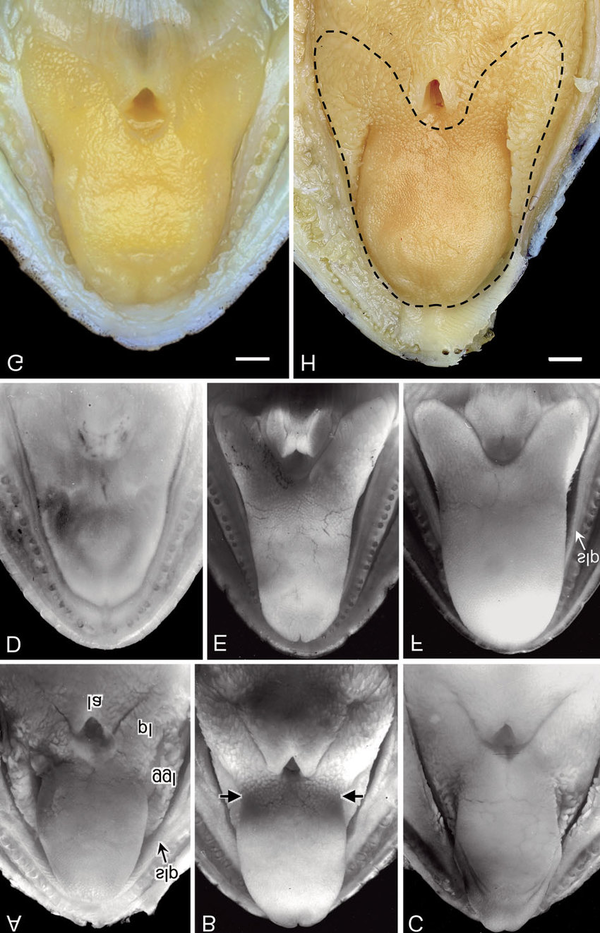
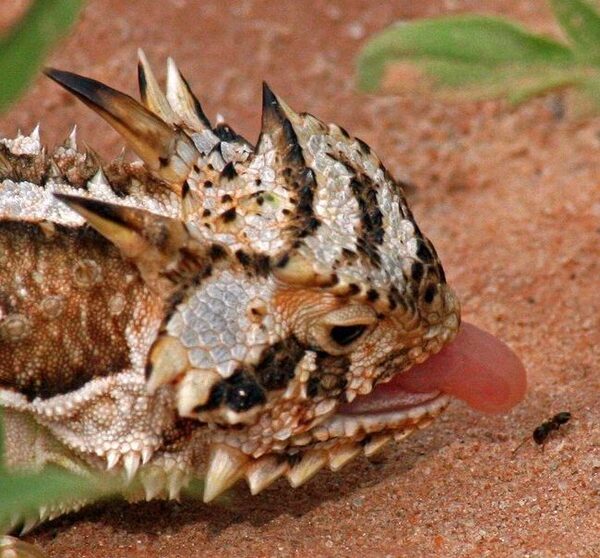
Horned lizards are famous for their ability to display an array of colors on their skin, and their tongues are no exception. These lizards use their colorful tongues for both defensive displays and hunting, using their tongues to flick at prey. The bright hues of their tongues may also act as a deterrent for predators, signaling that the lizard is not easy prey
The diversity in the colors of animal tongues is a testament to how evolution has shaped these creatures in unique ways. Whether it’s for defense, attracting mates, or hunting prey, these colorful tongues play important roles in their survival strategies. From the giraffe’s dark tongue to the chameleon’s colorful display, the animal kingdom is full of vibrant and fascinating adaptations. Understanding these tongues gives us a deeper appreciation of the complex behaviors and evolutionary adaptations that allow these animals to thrive in their environments.
animal tags: Horned-Lizards
We created this article in conjunction with AI technology, then made sure it was fact-checked and edited by a Animals Top editor.